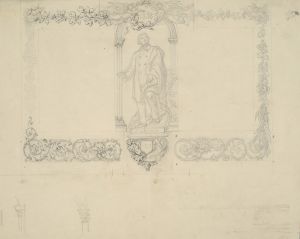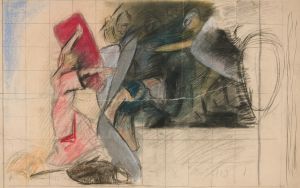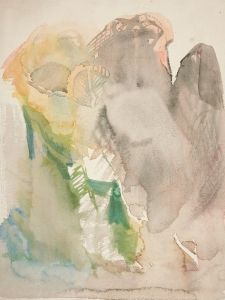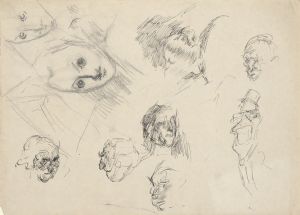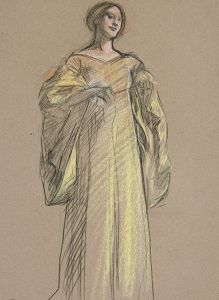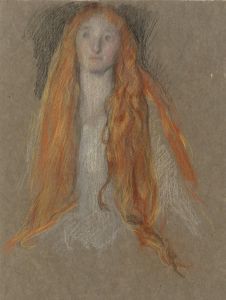
Title page for Aesop’s Fables, No. 2
A hand-painted replica of Edwin Austin Abbey’s masterpiece Title page for Aesop’s Fables, No. 2, meticulously crafted by professional artists to capture the true essence of the original. Each piece is created with museum-quality canvas and rare mineral pigments, carefully painted by experienced artists with delicate brushstrokes and rich, layered colors to perfectly recreate the texture of the original artwork. Unlike machine-printed reproductions, this hand-painted version brings the painting to life, infused with the artist’s emotions and skill in every stroke. Whether for personal collection or home decoration, it instantly elevates the artistic atmosphere of any space.
Edwin Austin Abbey was an American artist known for his illustrations and paintings, particularly those that depicted literary and historical themes. One of his notable works is the "Title page for Aesop’s Fables, No. 2," which showcases his skill in combining artistic creativity with literary subjects.
Abbey was born on April 1, 1852, in Philadelphia, Pennsylvania. He began his career as an illustrator, contributing to magazines such as Harper's Weekly. His work was characterized by a strong attention to detail and a deep understanding of the narratives he illustrated. Abbey's illustrations often brought stories to life, capturing the essence of the characters and the settings with precision and imagination.
"Aesop’s Fables" is a collection of stories credited to Aesop, a storyteller believed to have lived in ancient Greece. These fables are known for their moral lessons, often conveyed through tales of animals with human-like characteristics. Abbey's involvement with "Aesop’s Fables" highlights his interest in classical literature and his ability to interpret and visualize these timeless stories.
The "Title page for Aesop’s Fables, No. 2" by Abbey is an example of his illustrative work that combines both artistic and narrative elements. While specific details about this particular title page are limited, it can be inferred that Abbey's illustration would have been designed to capture the essence of Aesop's tales, possibly featuring elements that symbolize the themes and morals of the fables.
Abbey's style often included intricate line work and a keen sense of composition, which would have been well-suited to the task of creating a title page that not only introduced the collection but also set the tone for the stories within. His ability to convey emotion and action through his illustrations would have made the title page an engaging introduction to Aesop's world.
Throughout his career, Abbey's work was celebrated for its technical skill and its ability to evoke the spirit of the stories he illustrated. His contributions to the field of illustration were significant, and his works remain appreciated for their artistic merit and historical value.
In addition to his work on "Aesop’s Fables," Abbey is also known for his murals and paintings, including the famous series of murals in the Boston Public Library. His legacy as an artist is marked by his versatility and his dedication to bringing literary and historical subjects to life through his art.
Overall, Edwin Austin Abbey's "Title page for Aesop’s Fables, No. 2" represents a fusion of art and literature, showcasing his talent for creating visual narratives that complement and enhance the stories they accompany. Abbey's work continues to be studied and admired for its contribution to the fields of illustration and fine art.





